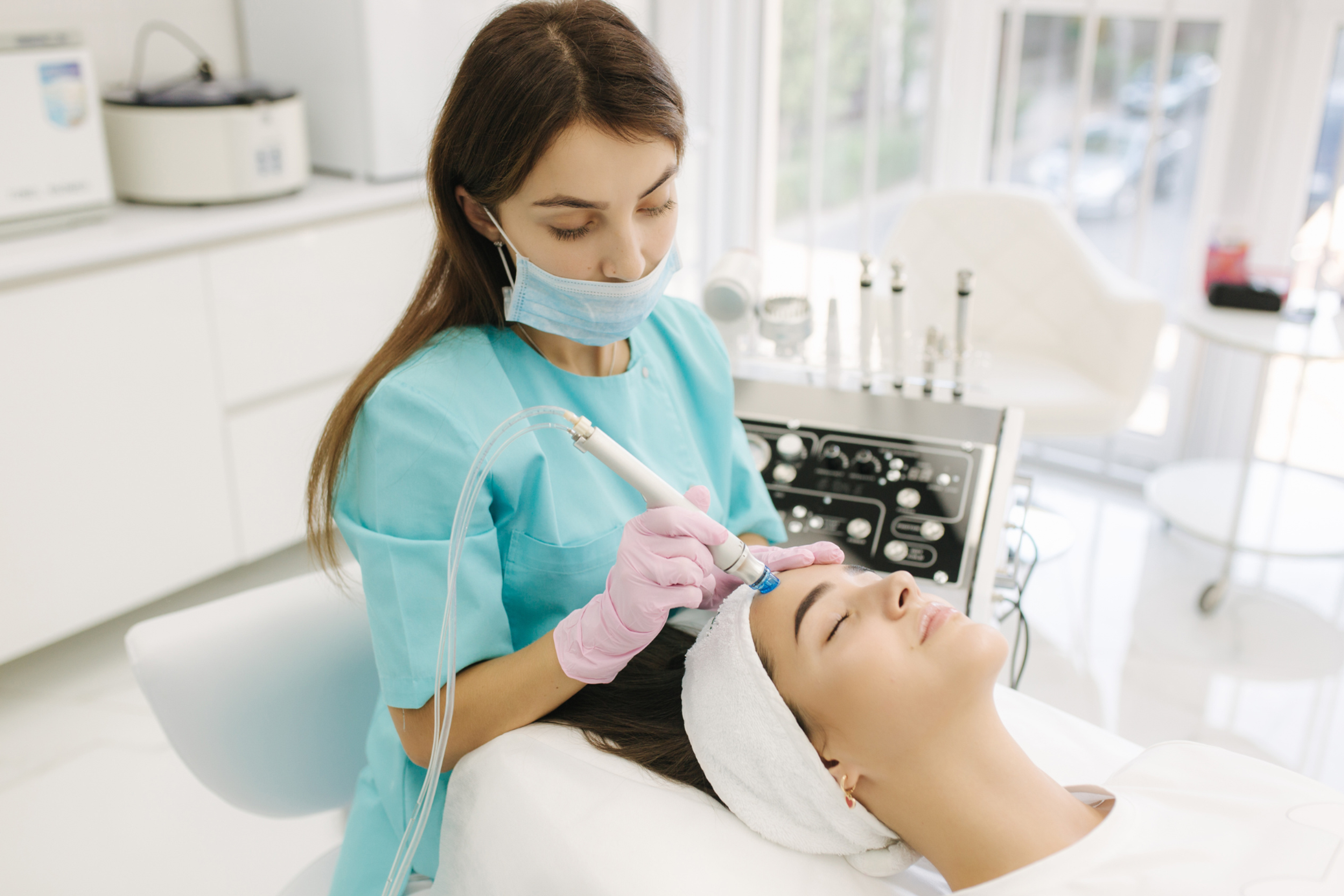The Top 10 Medical Schools in Texas (And How to Get In)
Saddle up as we spill the beans on the ten best medical schools in the Lone Star State and share must-know information on how to get into these programs.
Posted July 28, 2025

Join a free event
Learn from top coaches and industry experts in live, interactive sessions you can join for free.
Table of Contents
If you're planning to pursue a career in medicine and are looking for the best medical schools to apply to in Texas, then you're in the right place! In this article, we'll give you an overview of medical education in Texas, discuss the importance of choosing the right medical school for you, highlight the criteria used to rank medical schools in Texas, and break down the top 10 medical schools in Texas in detail. We'll also discuss admission requirements, financing options, the medical school curriculum, clinical rotations and residency programs, networking opportunities and professional development resources, and much more. So, buckle up and get ready to take a deep dive into the world of medical education in Texas!
A Brief Overview of Medical Education in Texas
The state of Texas boasts one of the most vibrant and competitive medical education systems in the country. With 16 medical schools, Texas offers a variety of medical educational programs designed to prepare students for careers in medicine. Medical education in Texas is based on a rigorous curriculum that combines classroom instruction and hands-on training in clinical settings. Medical students in Texas receive top-notch education and training that prepares them for fulfilling careers as doctors, nurses, and other health professionals.
In addition to the traditional medical education programs, Texas also offers a number of specialized programs that cater to specific areas of medicine. For example, the University of Texas Medical Branch at Galveston offers a residency in Aerospace Medicine, which prepares students for careers in space medicine and aviation medicine. The University of Texas Southwestern Medical Center in Dallas also offers a program in Medical Physics that trains students to use physics principles in the diagnosis and treatment of diseases. These specialized programs provide unique opportunities for students to pursue their interests and passions in medicine.
What to Expect from a Medical School Curriculum in Texas
Medical school curriculums in Texas vary but generally consist of a combination of lectures, lab work, and clinical training. Students are typically required to complete a minimum of four years of medical school, with the first two years focusing on basic science and the last two years on clinical and hands-on training. The curriculum is highly rigorous and requires students to develop strong analytical and problem-solving skills to succeed.
Clinical Rotations and Residency Programs in Texas
Clinical rotations and residency programs are a crucial part of the medical education process, allowing students to gain hands-on experience in a variety of specialties. Clinical rotations and residency programs vary in length and specialty and are highly competitive. Students must apply and be accepted into specific programs and typically must complete rigorous screening and evaluation processes before starting their residencies.
Networking Opportunities and Professional Development Resources
Medical schools in Texas offer a variety of professional development resources and networking opportunities to help students succeed in their future careers. These resources include career fairs, mentorship programs, and alumni networks. Additionally, medical schools in Texas often host guest speakers and seminars on a variety of topics, including research, public health, and healthcare policy.
Life as a Medical Student in Texas
Being a medical student in Texas can be both challenging and rewarding. The curriculum is rigorous and time-consuming, but there are also plenty of opportunities for socializing and getting involved in extracurricular activities. It's important to develop good time management skills and prioritize self-care to prevent burnout. Medical school is also a great opportunity to build lifelong friendships and professional connections.

Example Medical School Personal Statements
Read the personal statements that got applicants into schools like Stanford School of Medicine and Harvard Medical School.
Top 10 Medical Schools in Texas: A Detailed Breakdown
Without further ado, here is a breakdown of the top 10 medical schools in Texas:
1. Baylor College of Medicine
Ranked #1 in Texas overall and #7 nationally for its pediatrics specialty is Baylor College of Medicine. With a 100% first-time pass rate of the USMLE Step 1 Exam, Baylor medical students receive a rigorous education at Texas Medical Center, the world's largest medical complex, preparing them to practice medicine in clinical settings. Baylor College of Medicine is also #1 in NIH funding in Texas, making it a promising option for research-minded medical students. Accepting just 5.1% of applicants, Baylor is highly competitive, with admitted students having an average GPA of 3.93 and an average MCAT score of 518.
2. The University of Texas Southwestern Medical Center
Next is the medical school at UT Southwestern Medical Center, which has a strong emphasis on clinical training starting in students' first year. Medical students can choose five pathways: community health, medical education, global health, research, and quality improvement and patient safety to personalize their education to their individual passions. UT Southwestern Medical Center is relatively competitive with a 9.7% acceptance rate, and its class of 2025 had an average GPA of 3.89 and an average MCAT score of 516.
3. The University of Texas Health Science Center at San Antonio Long School of Medicine
Also in the University of Texas system is the UT Health Science Center at San Antonio, also known as UT Health San Antonio or Long School of Medicine. UT Health San Antonio promotes a culture of collaboration and mentorship within the student body and offers unique hands-on opportunities in research and patient interactions. UT Health San Antonio is also very competitive, accepting just 7.4% of applicants. Admitted students have an average MCAT score of 517.7 and an overall GPA of 3.88.
4. The University of Texas Health Science Center at Houston McGovern Medical School
Next is the McGovern Medical School at University of Texas Health Science Center--Houston. The ninth largest medical school in the nation, McGovern Medical School boasts more than 80 specialties and 6 dual-degree programs, alongside dozens of research centers. McGovern is a highly competitive school with a 4.5% acceptance rate. Its class of 2027 has an average MCAT score of 512 and an average GPA of 3.88.
5. Texas A&M University School of Medicine
With a focus on primary care, rural medicine, military medicine, and innovation, the School of Medicine at Texas A&M has five locations across the state. Students may also choose to pursue research through its biochemistry, cancer, cardiovascular and integrated biology, cell and molecular biology, clinical translational medicine, microbial and molecular pathogenesis and neuroscience research programs. Accepting just 5.4% of applicants, the School of Medicine at Texas A&M had an entering class with a median GPA between 3.7 and 4.0 and a median MCAT score between 510 and 513.
6. Texas Tech University Health Sciences Center School of Medicine
Next is the School of Medicine at Texas Tech University Health Sciences Center, or TTUHSC School of Medicine, located in Lubbock. With a focus on interdisciplinary education and clinical training, TTUHSC School of Medicine requires Phase 2 students to complete clerkships in internal medicine, surgery, family medicine, obstetrics/gynecology, pediatrics, and psychiatry. The entering class of 2018 had an average GPA of 3.74 and MCAT of 507, and TTUHSC's acceptance rate is 5.1%.
7. University of North Texas Health Science Center Texas College of Osteopathic Medicine
The Texas College of Osteopathic Medicine (TCOM) at the University of North Texas Health Science Center was the first osteopathic medical school in the state. TCOM heavily emphasizes rural medicine and primary care, ranking #11 nationally for primary care. TCOM accepts 9.2% of applicants, and its entering class of 2022 had an average GPA of 3.81 and MCAT of 508.7.
8. Sam Houston State University College of Osteopathic Medicine
The College of Osteopathic Medicine at Sam Houston State University, located in Conroe, seeks to address the primary care physician shortage in East Texas. The College of Osteopathic Medicine is also a federally designated Hispanic-Serving Institution, and first-generation students make up 32% of its student body. The average admitted student has a GPA of 3.69 and a MCAT score of 506, and the school has an acceptance rate of 2.5%.
9. Texas Christian University Burnett School of Medicine
At #9 is the Burnett School of Medicine at Texas Christian University in Fort Worth. Unlike many medical schools, the Burnett School of Medicine offers hands-on clinical experiences in students' first year, allowing them a head start on patient-centered practice and building strong provider-patient relationships. Burnett is extremely competitive with an acceptance rate of just 1.9%, and its entering class of 2023 had an average MCAT score of 511 and an average GPA of 3.77.
10. Texas Tech University Health Sciences Center El Paso Foster School of Medicine
Last is the Foster School of Medicine at TTUHSC El Paso. The only medical school requiring students to learn medical Spanish, the Foster School of Medicine has a strong emphasis on public health, community medicine, and independent scholarship and research. The Foster School of Medicine accepts 2.7% of applicants, and its entering class of 2023 had an average GPA of 3.82 and an average MCAT score of 509.
Choosing the Right Medical School for You
Medical schools in Texas are ranked based on a number of factors, including MCAT and GPA scores, research funding, clinical training, faculty-student ratio, cultural diversity, and location. The rankings are compiled by independent organizations, such as U.S. News & World Report, and are aimed at helping potential students make informed decisions about where to apply. It's crucial to remember that rankings should not be your sole factor when deciding where to pursue medical education. You should always consider your personal goals and values when making such a crucial decision.
One important factor to consider when choosing a medical school in Texas is the type of program offered. Some schools may offer traditional four-year programs, while others may offer accelerated or combined degree programs. When considering the top medical schools in Texas, note that each school has its own unique strengths and areas of focus. For example, The University of Texas Southwestern Medical Center is known for its research in cardiology and preventative medicine, while Baylor College of Medicine has a strong emphasis on pediatrics and genetics.
Furthermore, many of these schools offer specialized programs and tracks for students interested in specific fields of medicine. Texas A&M University School of Medicine, for instance, has a program focused on military medicine, while TTUHSC School of Medicine offers an accelerated family medicine track for students interested in practicing in underserved rural areas. It's important to research and understand the differences between these programs to determine which one best fits your needs and goals.
Another important consideration is the school's emphasis on community service and outreach. Many medical schools in Texas have programs and initiatives aimed at serving underserved communities and promoting public health. If community service is important to you, it's worth researching the various opportunities available at each school.
How to Get Into the Top Medical Schools in Texas: Requirements and Tips
Getting admitted to a top medical school in Texas can be highly competitive, but there are a number of things you can do to increase your chances of being accepted. First, focus on getting good grades and a high MCAT score. Second, get involved in meaningful extracurricular activities, such as volunteering in hospitals and clinics, participating in research projects, or shadowing medical professionals. Third, write a strong personal statement and have multiple people proofread it for grammatical errors and coherence. Finally, prepare well for interviews and be confident in your abilities and goals.
Key Takeaways
- Pursuing a degree from a top medical school in Texas is a significant investment in your future, especially if you are pursuing rural medicine.
- With dedicated faculty, state-of-the-art research facilities, and ample opportunities for clinical training and professional development, each medical school in Texas has its own unique programs you should consider for your career.
- When applying and choosing a medical school, carefully consider your own passions and career objectives and how they align with the mission of each school.
Work one-on-one with a top medical school admissions coach who knows the Texas med school landscape inside and out. Whether you're aiming for rural medicine, research, or a specific specialty, get expert guidance on school fit, secondaries, and interview prep.
See: The 10 Highest-Rated Med School Coaches
For more information on how to make your application materials as strong as possible, read these articles:
- How Many Medical Schools Should I Apply to? A Strategic Approach
- How to Get Clinical Hours for Med School: Building Your Experience
- Average MCAT Scores of the Top 50 Medical Schools
- The Ultimate Guide to the Medical School Application
- AACOMAS Application Timeline: Key Dates and Tips
- Nursing School Cost – How Much is Nursing School?
- How to Become a Physician Assistant
FAQs
What’s the best medical school in Texas?
- Baylor College of Medicine is consistently ranked the top medical school in Texas overall. It has a strong reputation in research, clinical training, and specialties like pediatrics and genetics.
Is it hard to get into Texas medical schools?
- Yes. Top schools like Baylor, UT Southwestern, and McGovern have acceptance rates under 10%, with average MCAT scores ranging from 510 to 518 and GPAs above 3.7.
Do Texas medical schools prefer in-state applicants?
- Definitely. Most public med schools in Texas give strong preference to Texas residents. If you're applying from out of state, your application needs to be especially competitive.
What MCAT score do I need for Texas medical schools?
- It depends on the school, but generally you’ll want at least a 510 to be competitive. Top schools like Baylor and UT Southwestern expect 516+.
Are there any med schools in Texas focused on rural or primary care?
- Yes, schools like Texas A&M, Sam Houston, TTUHSC, and UNT-TCOM have strong programs in rural medicine and primary care. They’re ideal if you want to serve underserved communities.
Browse hundreds of expert coaches
Leland coaches have helped thousands of people achieve their goals. A dedicated mentor can make all the difference.


















